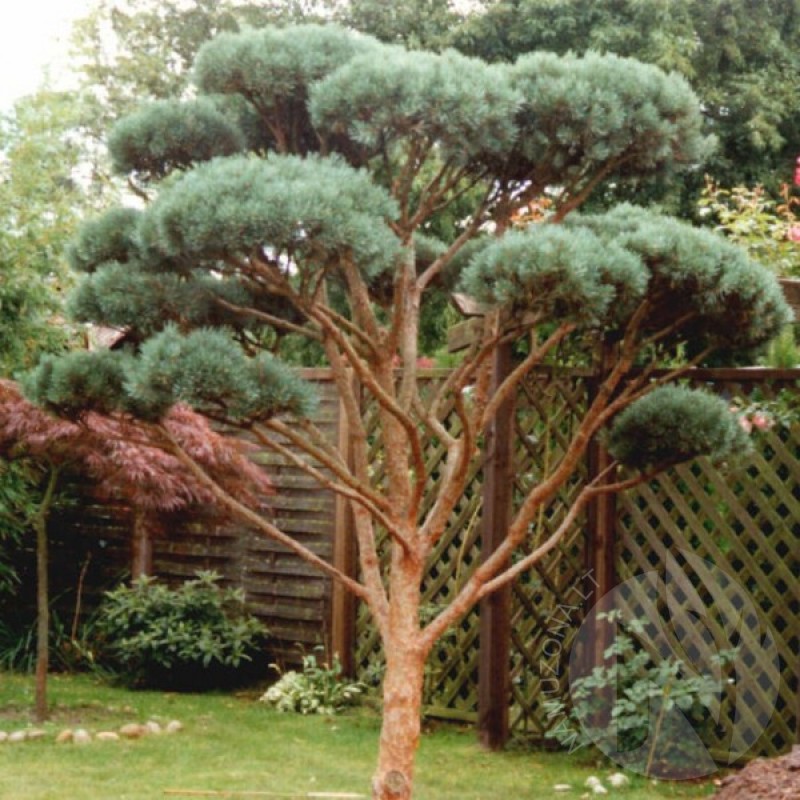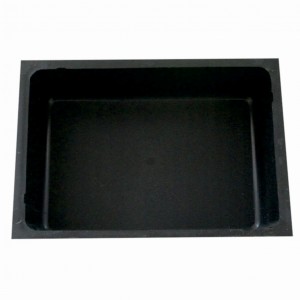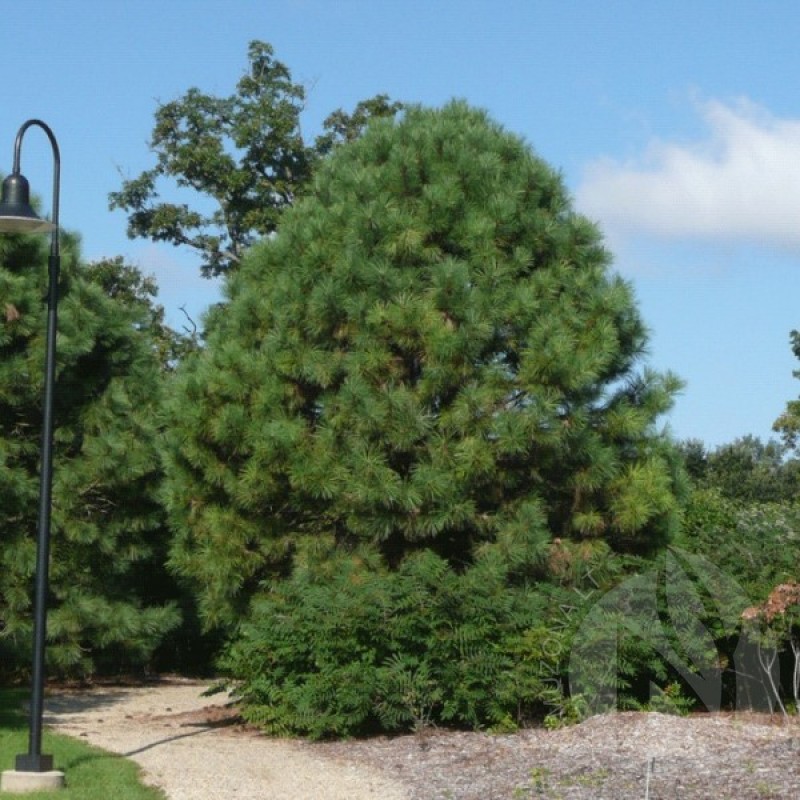
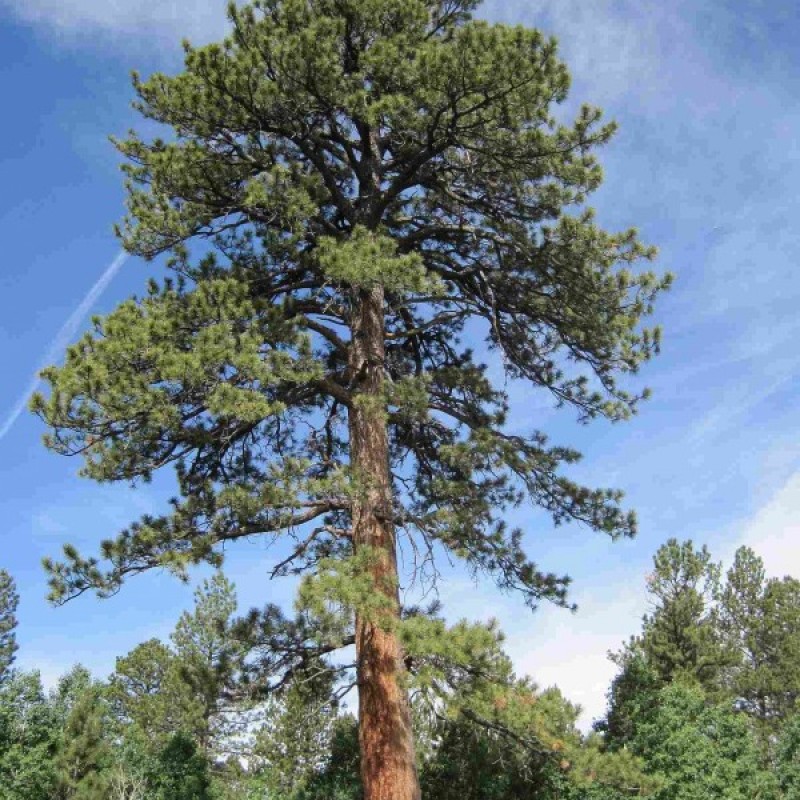
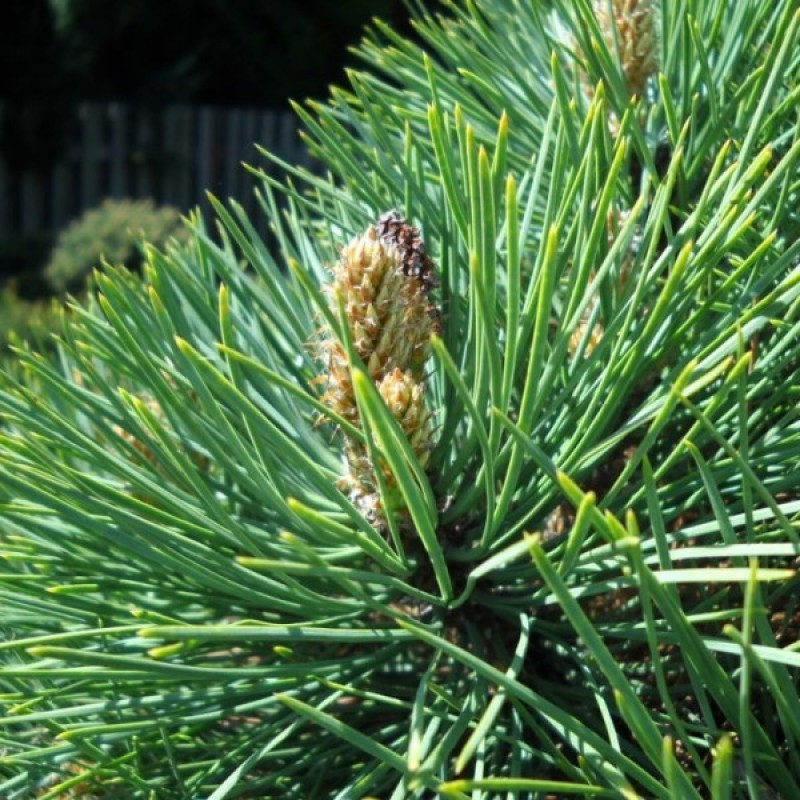
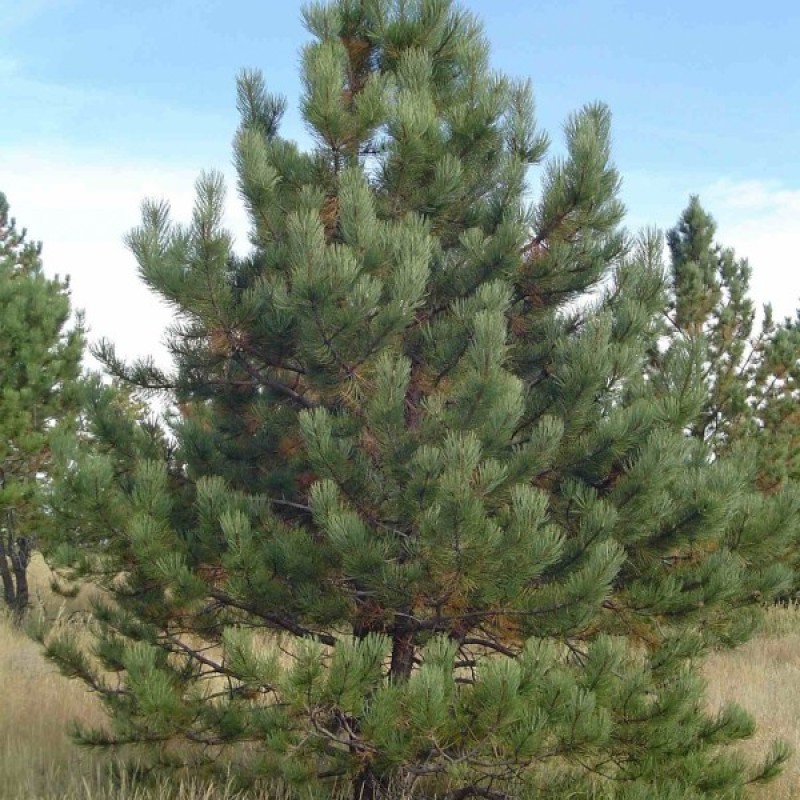
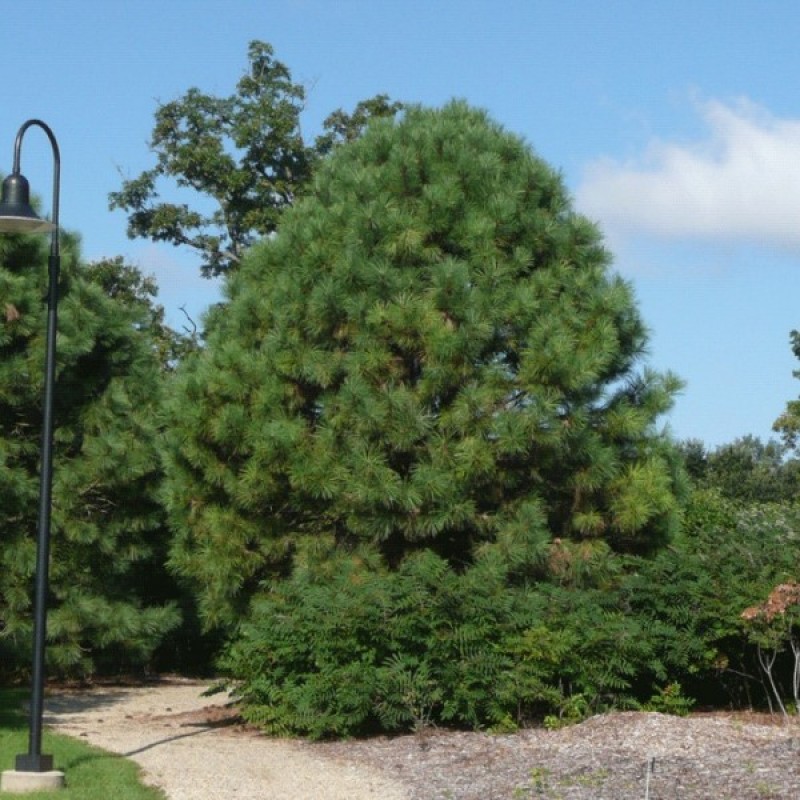
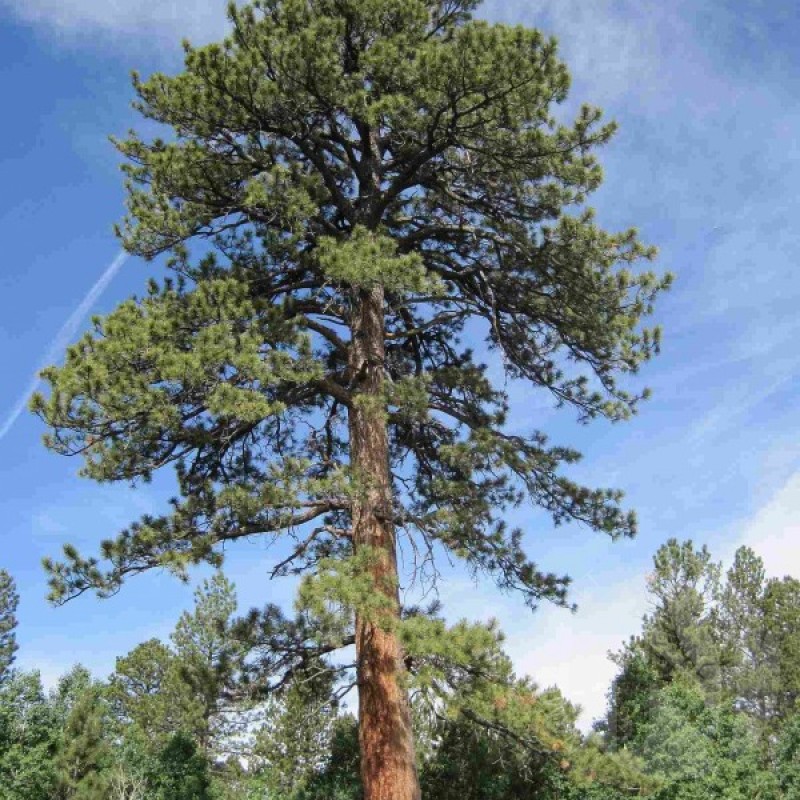
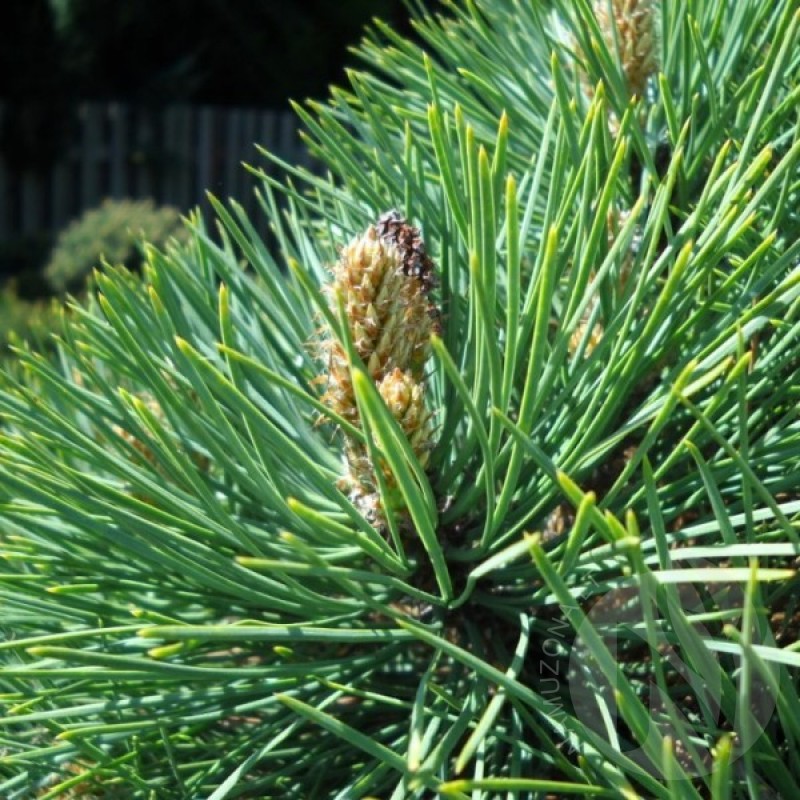
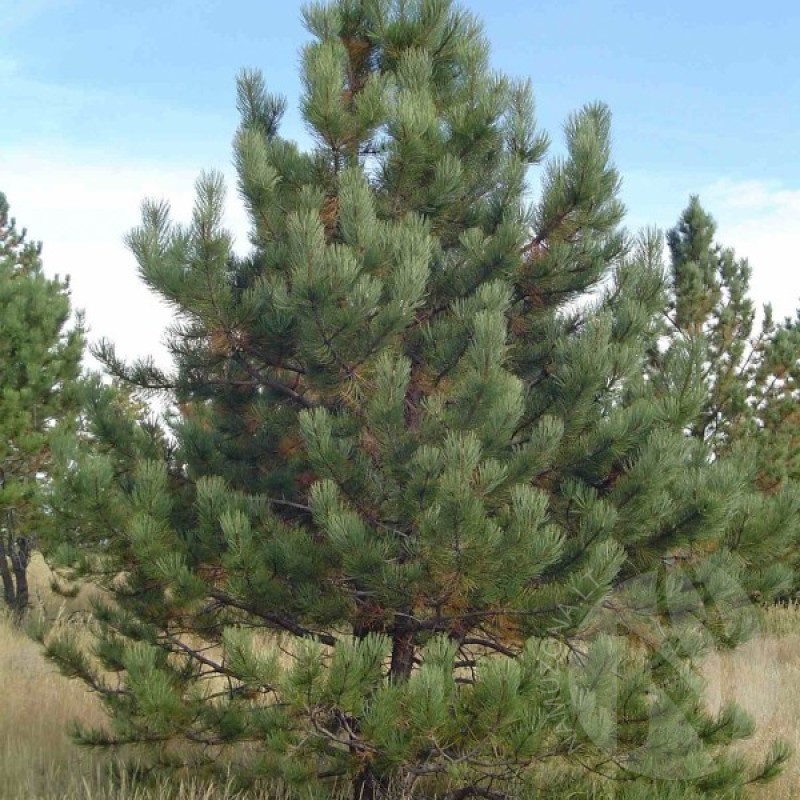
PAY ATTENTION!
All seeds (except SOLD OUT) are available for immediate shipping and will be dispatched within 1-2 business days.
INFORMATION NEEDED? PLEASE CONTACT US NOW!
Ponderosa pine is the most common pine in the American West and is the primary species in many middle elevation forests. Its range extends throughout most mountain ranges from the Rockies to California, including southern British Columbia and the highest elevations of northwestern Mexico.
Young trees have a neatly pyramidal habit but when mature they develop a tall, bushy, irregular crown. The bark can be quite beautiful and impressive in older specimens. It is cinnamon orange with contrasting deep black crevaces and has flattened scaly plates that break off and are said to smell like vanilla. The long needles are deep to pale green, come in bundles of two and three, and the brown female cones are sharp, dense and triangular.
While Ponderosa pine is drought tolerant, extended dry periods across its native range have caused many of the trees to become vulnerable to bark beetles. This results from high competition for limited moisture in unnaturally high density forests. Ultimately these pests thin trees to the point where they are well spaced. When planted on home sites and given supplemental water, the trees are better able to withstand the beetles. Cultivated ponderosa pines are fast growing and make quick shade trees, screens or windbreaks. They also offer vital food and habitat to wildlife.
Genus - Pinus
Species - Ponderosa
Common name - Ponderosa Pine
Pre-Treatment - Not-required
Hardiness zones - 3 - 8
Height - 80'-120' / 24 - 37 m
Spread - 20'-25' / 6 - 8 m
Plant type - Tree
Vegetation type - Evergreen
Exposure - Full Sun
Growth rate - Fast
Soil PH - Acidic, Neutral, Alkaline
Soil type - Clay, laom, Sand, well drained
Water requirements - Drought tolerant, average water
Landscape uses - Alpine, Feature Plant, Screening / Wind Break, Shade Trees
Leaf / Flower color - Green / --
GERMINATION INSTRUCTIONS
1. Place the seeds in a container with tepid water and soak them for 24 hours. Change the water and wait another 24 hours.
2. Fill small pots with compost. Place one or two pine seeds on top of the compost in each pot, then cover the seeds with a thin layer of sand.
3. Water the sand and compost to add moisture, then place the pots in a warm, sunny location. As the seedlings emerge and grow, the soil needs to remain moist, not wet.
Repot the pine trees into medium-sized pots in the fall. Grow them in the pots for the following season until they are large and strong enough for transplanting into the landscape.
No questions about this product.

